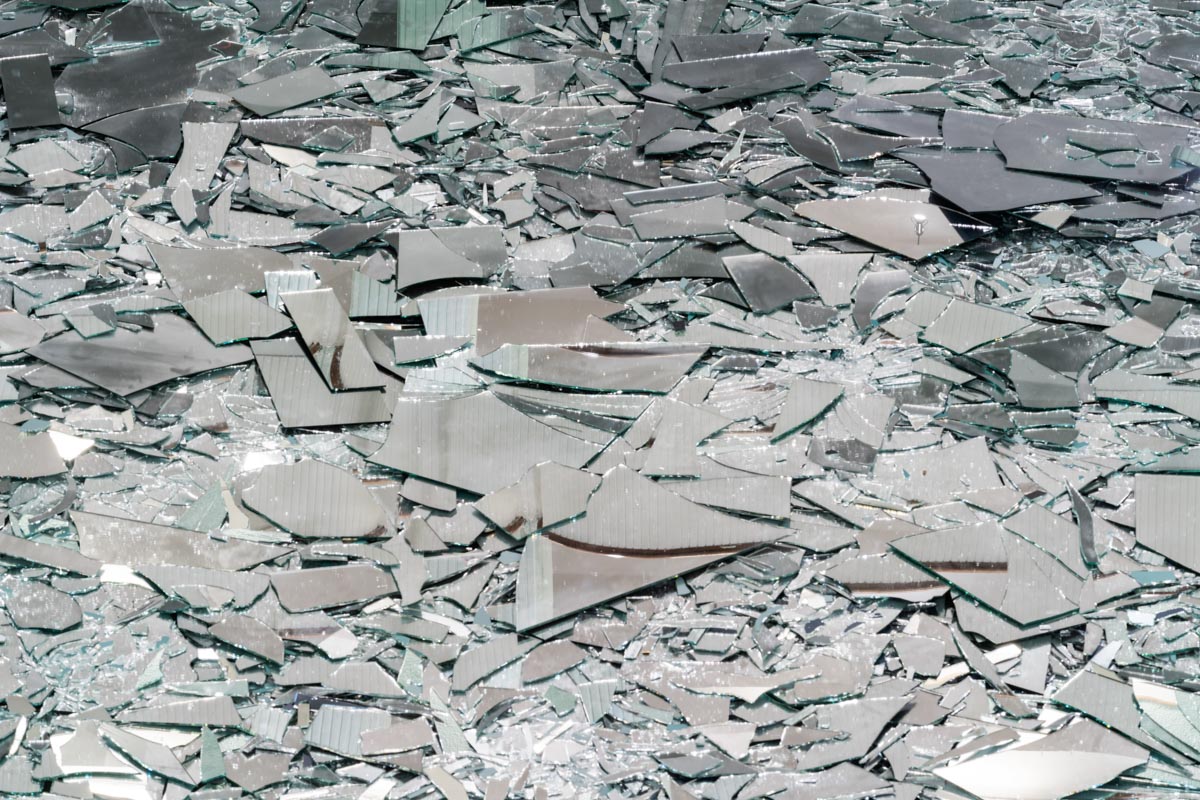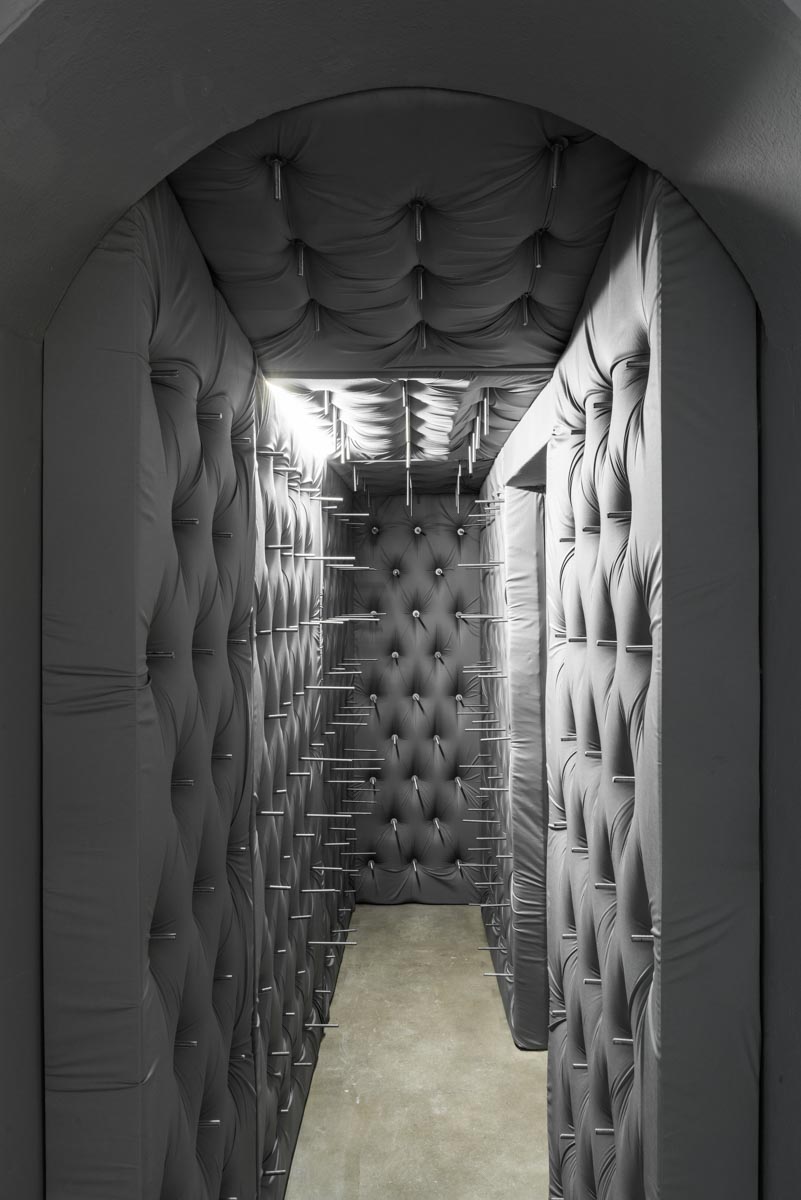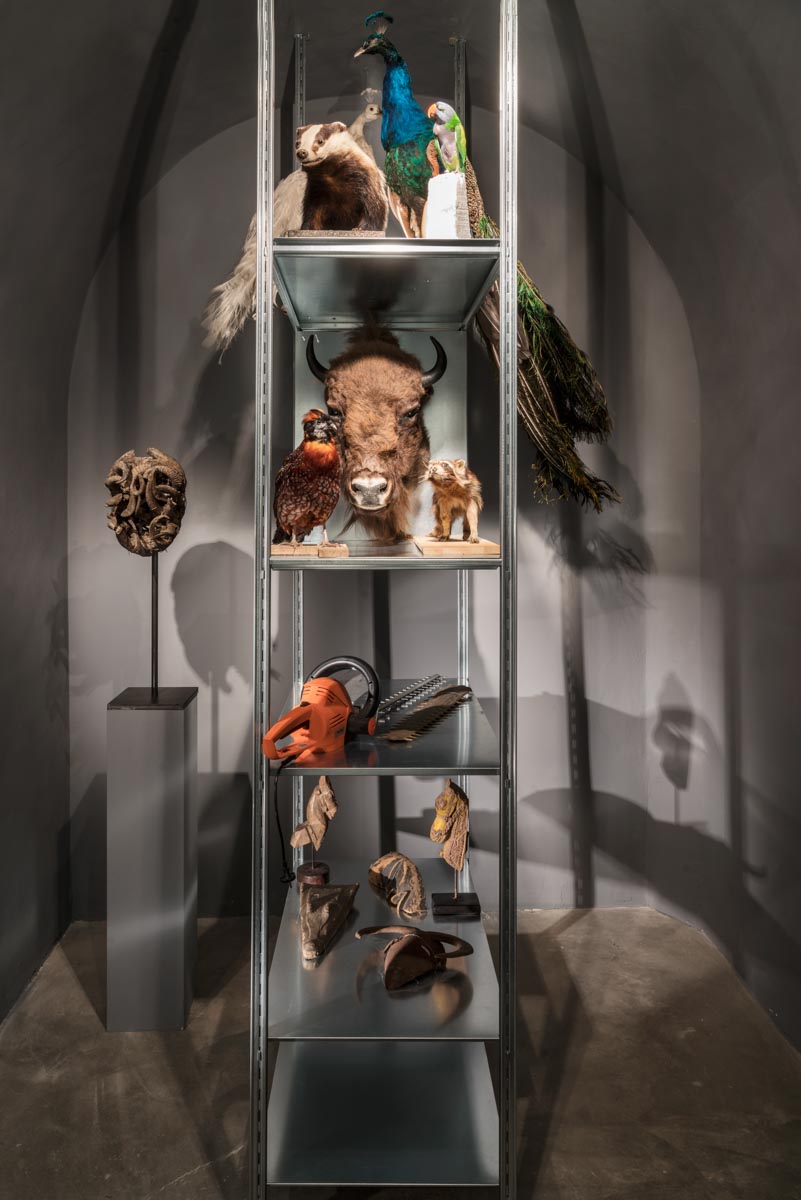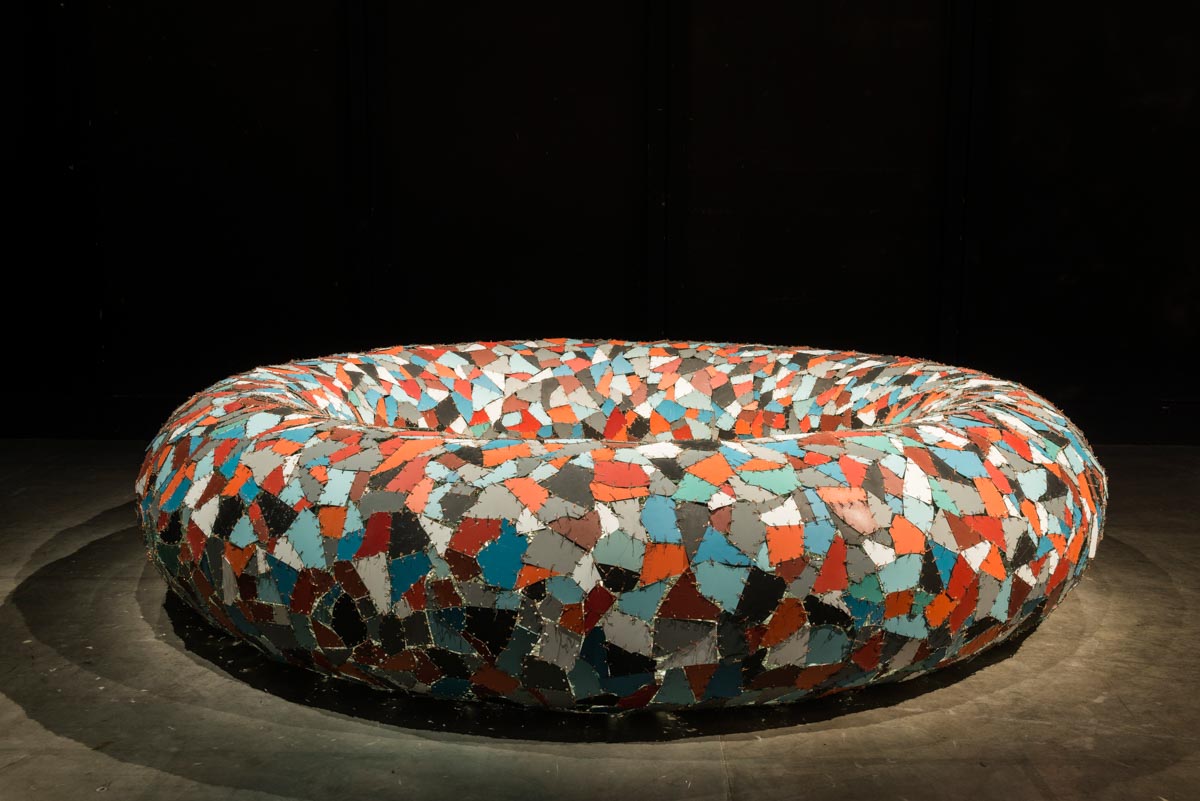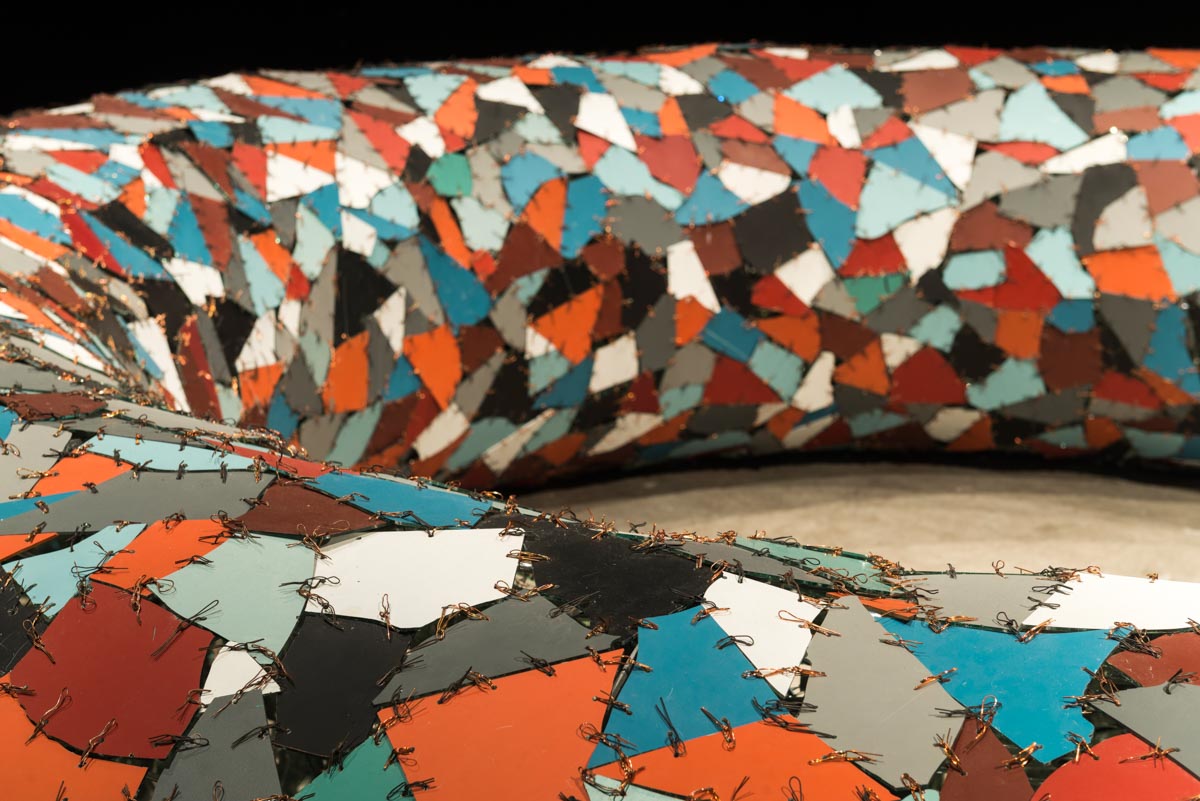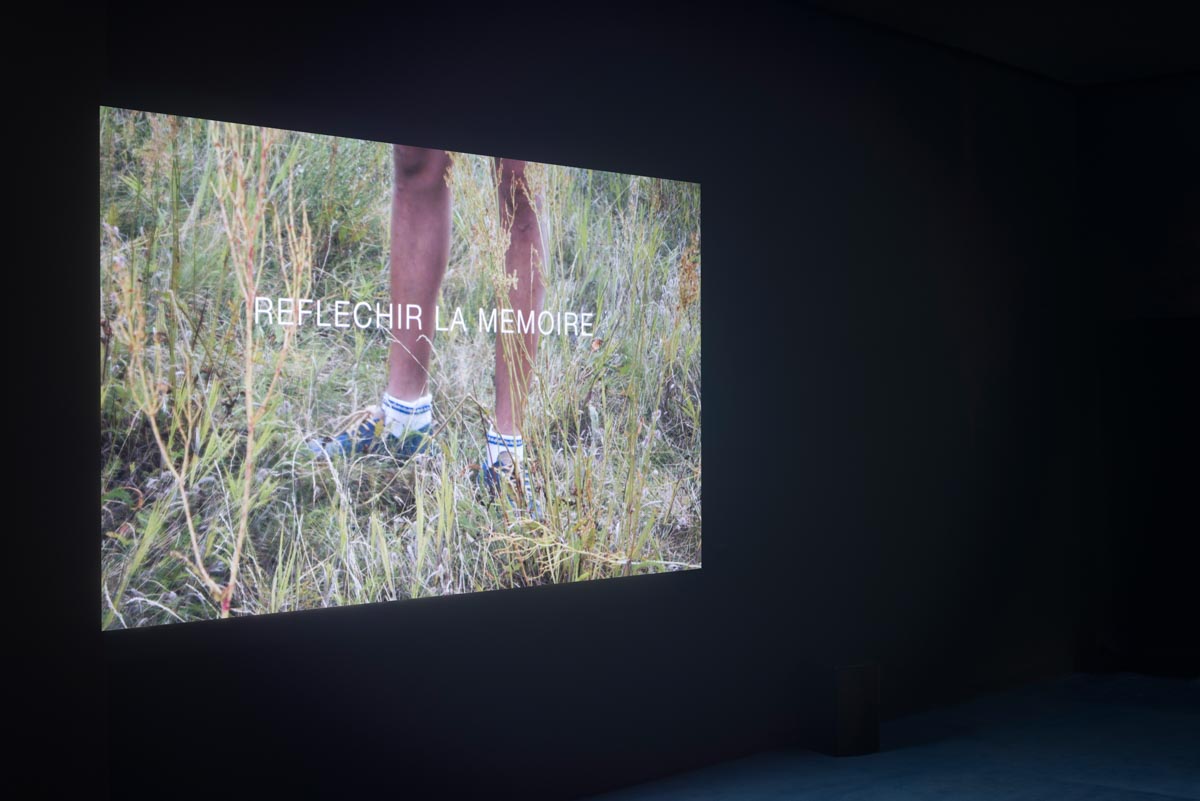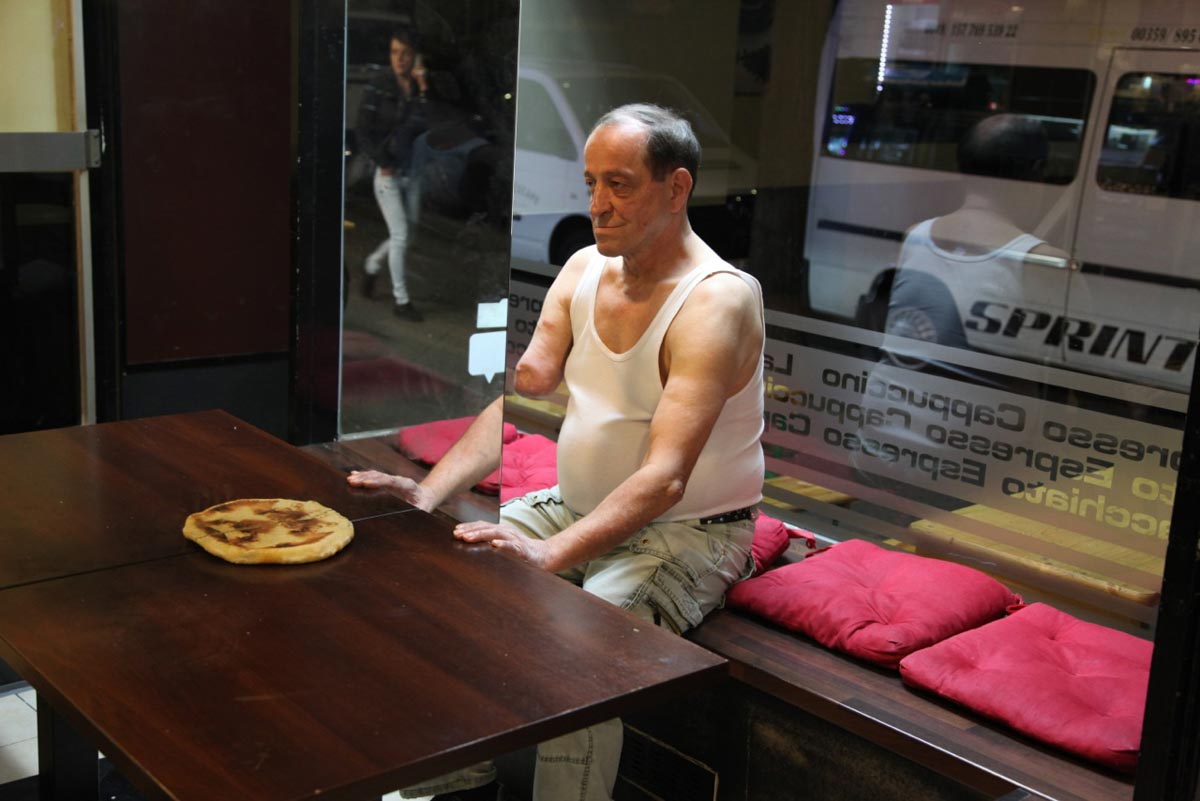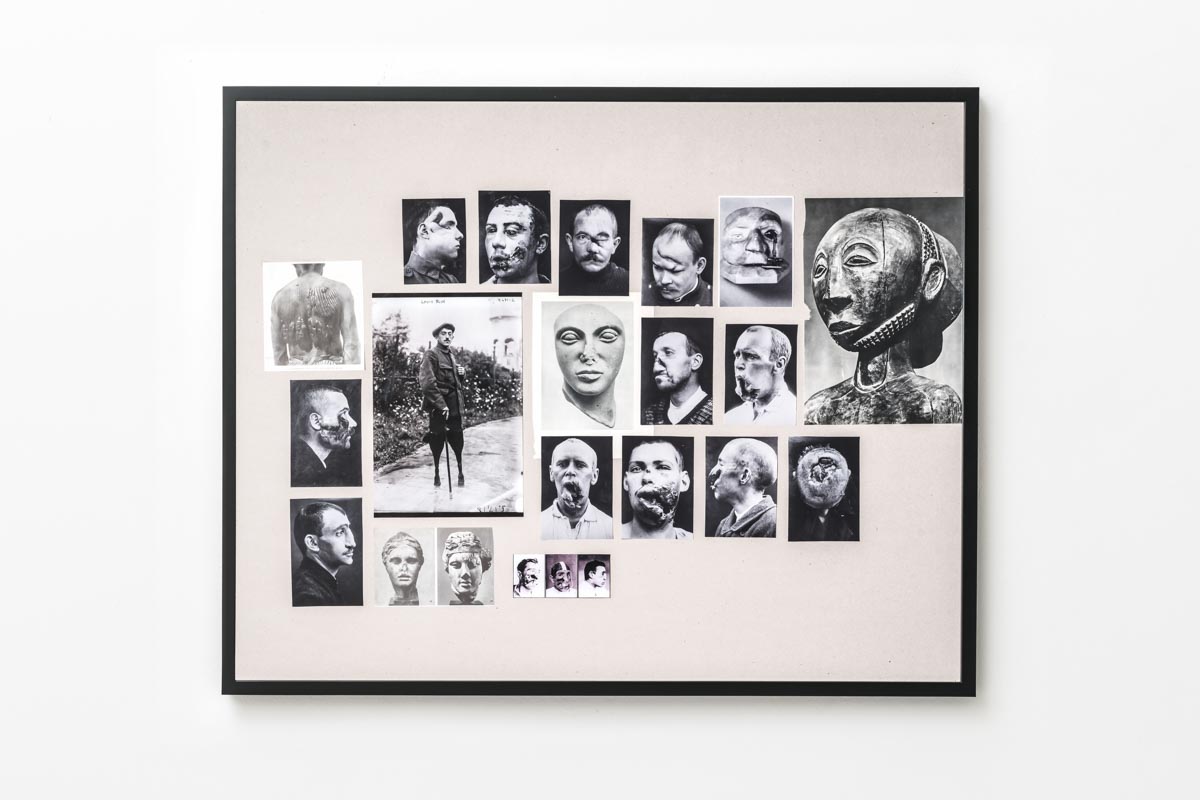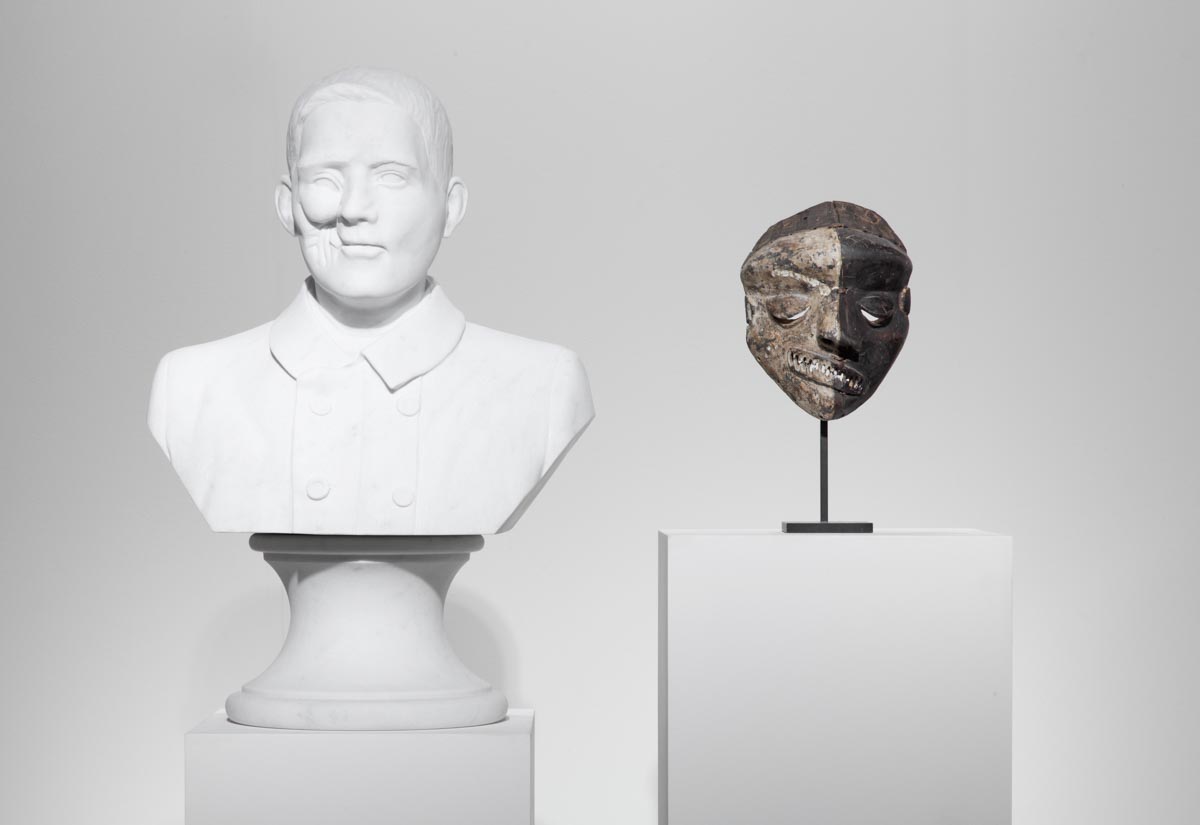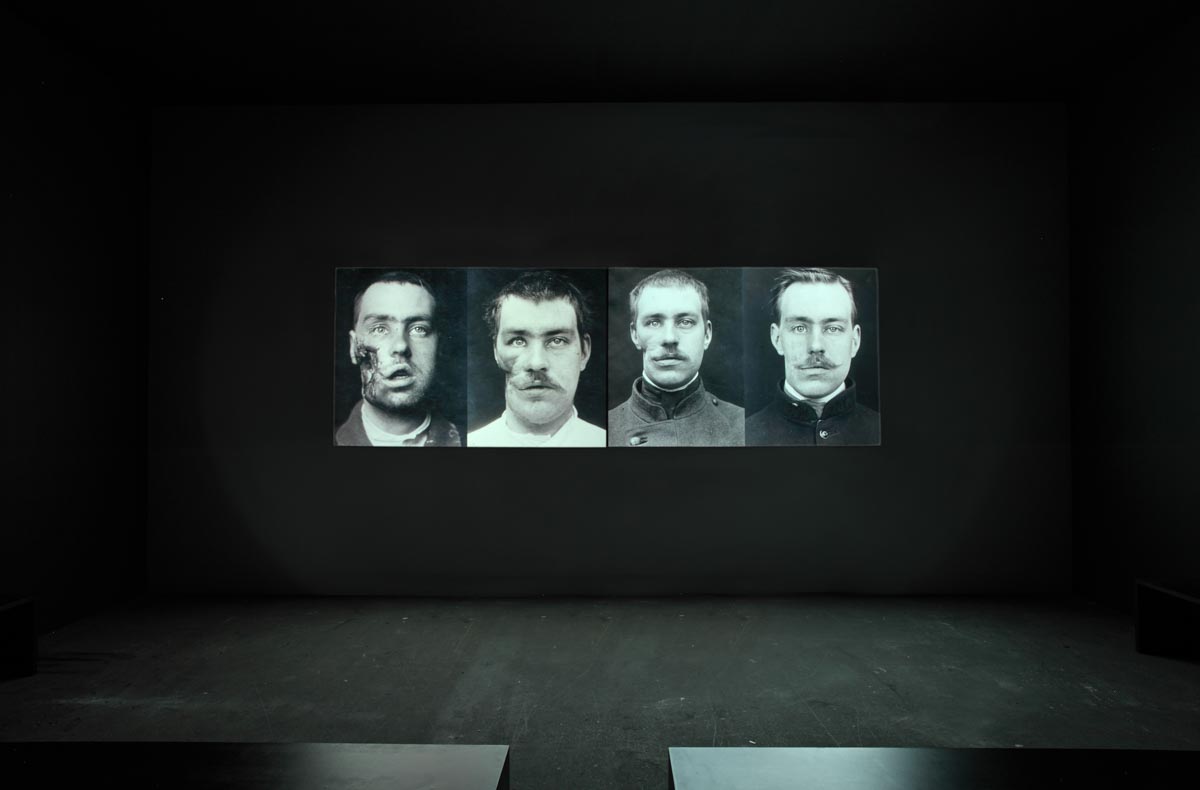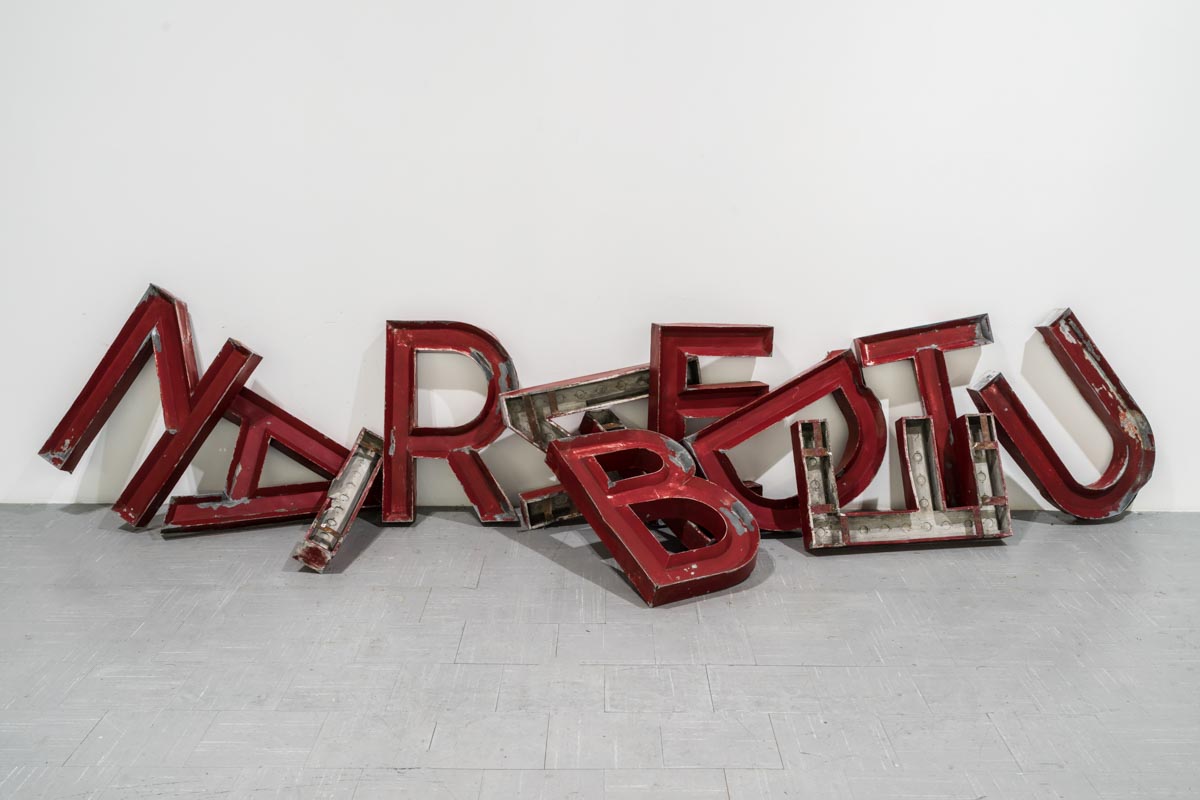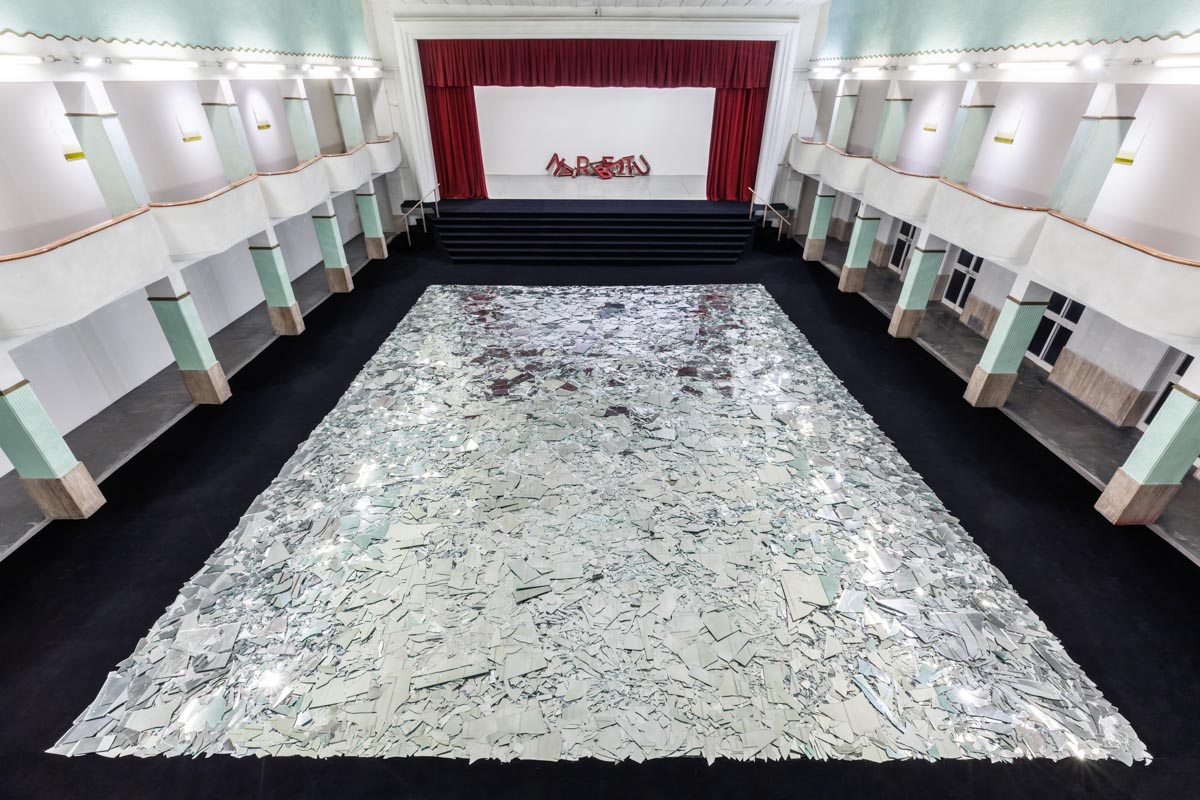
Le grand miroir du monde, 2017, mirrors, site specific dimension. Photo Ela Bialkowska

Le grand miroir du monde, 2017, mirrors, site specific dimension. Photo Ela Bialkowska
Le grand miroir du monde, 2017, mirrors, site specific dimension. Photo Ela Bialkowska
Noise, silence, 2017, metal, fabric, foam, wood, site specific installation. Photo Ela Bialkowska
Objects of desire, 2017, stuffed animals, wooden sculptures, antique mask, metal stand, zinc-coated shelves, site specific installation, Photo Ela Bialkowska
Ring Theory, 2015, mirrors, iron, metal wires, 100 x 500 x 500 cm. Photo Oak Taylor-Smith
Ring Theory, 2015, mirrors, iron, metal wires, 100 x 500 x 500 cm. Photo Oak Taylor-Smith
Réfléchir la Mémoire / Reflecting Memory, 2016, video HD, 48’. Photo Vanni Bassetti
Réfléchir la Mémoire / Reflecting Memory, 2016, video HD, 48’
Work on memory #2, 2017, collage, 82 x 102 x 3 cm. Photo Ela Bialkowska
Soldat Blessé, Masque de Maladie, 2013, bust in Carrara marble, mask Pende (beginning XX century) from Congo, variable installation dimension. Photo Sebastiano Pellion di Persano
The Repair, 2012, diptych of 80 slides, 15', loop. Photo Sebastiano Pellion di Persano
Eternelle promesse, 2017, metal letters, site specific dimension. Photo Ela Bialkowska
Through his artworks, Kader Attia draws us into the double bind of pride and defiance that accompanies a history of loss and dispossession. And therein lies the contradiction that he seeks to reveal: the dilemma of the 21st century with its residue of a modernist fascination for the soiled, festering underbelly of civilisation’s discontents pitted against the contemporary heroism of a hygiene-centric, post-touch condition. His politically charged production draws our attention to the cyclical agonism between injury and repair. The subtraction of limbs borne by today’s refugees from Afghanistan, Libya, Iraq, and Syria who, mutilated and handicapped, have migrated to France and other European cities, symbolises not only a breach within the social order, but illustrates the psycho-pathological scars of centuries of religious strife and industrial exploitationi. Apparitions loom behind the secrets of the past and, when suppressed, only discharge further ghosts and phantom references.
Adamantly physical in its execution yet highly conceptual, Kader Attia’s art offers the public a dynamic conduit between political, social and cognitive fields. The normative frameworks of anthropology, neuroscience and medicine are twisted into a new cord of poetic traction. Not unlike the ideogrammatic poetry of Guillaume Apollinaire or Pierre Albert-Birot when he writes, “Nous sommes des circonférences”ii, or even the lyrics of Lou Reed in “I’ll be your mirror”, Attia’s artworks perform a never-ending surgery on language, image and volume. His concept of the phantom limb in art is situated between Paul Valéry’s “objet ambigüe” and Marcel Duchamp’s “Ready-Made”. From Valéry we retain the poetic uncertainty of meanings, the blurring of nature and culture, the object at the edge of the unknowniii. With Duchamp, the artefact is interchangeable, manufactured industrially and quintessentially anonymous. In contrast, for Kader Attia, a repaired object remains an organ. It displays the active DNA of its own morphology, the wilful marks of appropriation, and the poetic indentures of time’s passing.
And so it is that Kader Attia’s practice as an artist speaks about an intense preoccupation with aesthetic and psychological imbalance, with the disequilibrium created by an ideology of perfection and consumption. Whether we are gazing at stapled shards of mirror that emit only a partial image, or contemplating the bricolage of a cardboard chassis on a scooter, Attia points us to the ideological flaws and material frays that define our conjoined, post-colonial present. His installations appear smooth and coherent, his objects seductive and resolved, yet it is the sensitivity with which he articulates the troubling disfiguration of history and the fracturing of individual memory that makes his body of work so contemporaneous, rigorous, and poetic at once.
Clémentine Deliss, extract from “The phantom limbs in art”, 2018
i René Girard writes, “Le corps humain est un système de différences anatomiques. Si l’infirmité même accidentelle, inquiète, c’est parce qu’elle donne une impression de dynamisme déstabilisant. Elle paraît menacer le système en tant que tel. On cherche à la circonscrire mais on ne peut pas ; elle affole autour d’elle les différences qui deviennent monstrueuses, elles se précipitent, se télescopent, se mélangent, à la limite menacent de s’abolir. La différence hors système terrifie parce qu’elle suggère la vérité du système, sa relativité, sa fragilité, sa mortalité ! » in « Le Bouc Emissaire », Grasset 1982, p.34.
ii Pierre Albert-Birot, «Poème au mort», La Lune ou le livre des poèmes, 1924, tiré de Pierre Albert-Birot, Poésie 1916-1924, Mortemart: Rougerie, 1992, p. 199-202.
iii Paul Valéry writes, “Le hazard, dans mes mains, vint placer l’objet du monde le plus ambigu. Et les réflexions infinies qu’il me fît faire, pouvaient aussi bien me conduire à ce philosophe que je fus, qu’à l’artiste que je n’ai pas été.” In “EUPALINOS ou l’Architecte”, 1921, p.49
Adel Abdessemed Etel Adnan Ai Weiwei Leila Alaoui Juan Araujo Kader Attia Barbana Bojadzi Daniel Buren Cai Guo-Qiang Alejandro Campins Iván Capote Yoan Capote Loris Cecchini Elizabet Cerviño Chen Zhen Nikhil Chopra Marcelo Cidade Carlos Cruz-Diez Jonathas de Andrade Berlinde De Bruyckere Leandro Erlich Carlos Garaicoa Osvaldo González Antony Gormley Gu Dexin Shilpa Gupta Subodh Gupta Carsten Höller Eva Jospin JR Ilya & Emilia Kabakov Zhanna Kadyrova Kan Xuan Anish Kapoor André Komatsu Alicja Kwade Jannis Kounellis Julio Le Parc Luis López-Chávez Jorge Macchi Ahmed Mater Cildo Meireles José Mesías Sabrina Mezzaqui Moataz Nasr Rudi Ninov Hans Op de Beeck Ornaghi & Prestinari Giovanni Ozzola Michelangelo Pistoletto Susana Pilar Qiu Zhijie Tobias Rehberger Arcangelo Sassolino Manuela Sedmach Serse Kiki Smith Nedko Solakov Marta Spagnoli José Antonio Suárez Londoño Hiroshi Sugimoto Sun Yuan & Peng Yu Ana Maria Tavares Pascale Marthine Tayou Armando Testa Nari Ward Sislej Xhafa José Yaque Zhuang Hui
